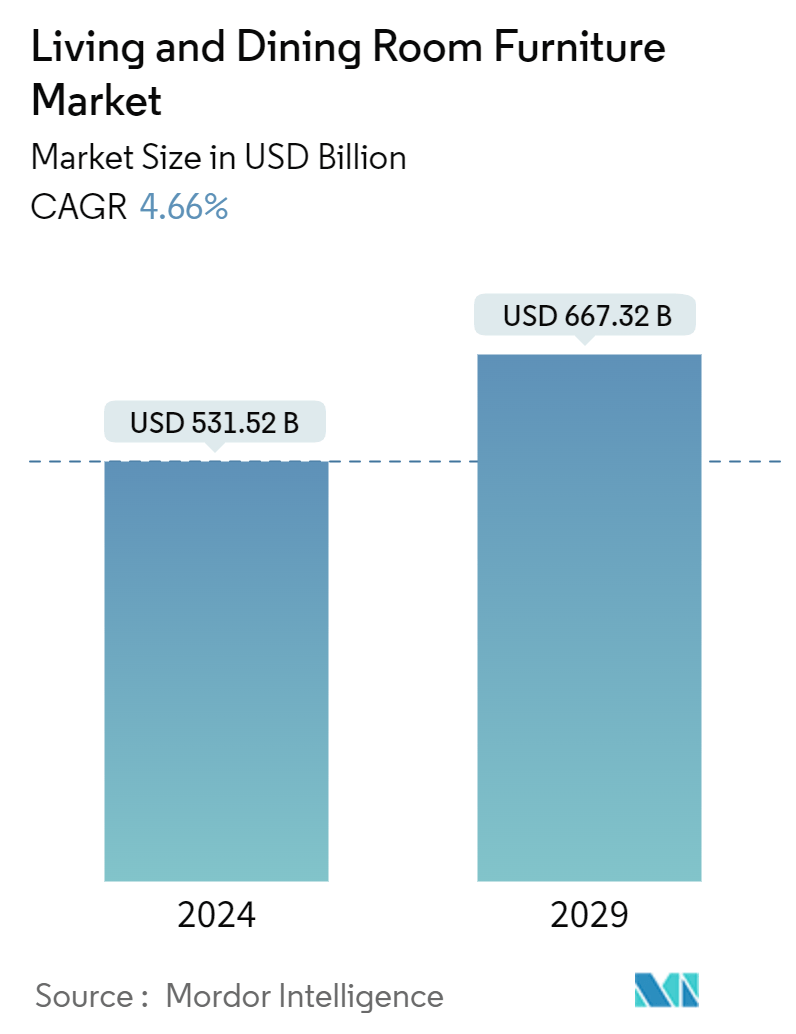Market Size of Living And Dining Room Furniture Industry

| Study Period | 2020 - 2029 |
| Market Size (2024) | USD 531.52 Billion |
| Market Size (2029) | USD 667.32 Billion |
| CAGR (2024 - 2029) | 4.66 % |
| Fastest Growing Market | Asia Pacific |
| Largest Market | North America |
Major Players
*Disclaimer: Major Players sorted in no particular order |
Need a report that reflects how COVID-19 has impacted this market and its growth?
Living and Dining Room Furniture Market Analysis
The Living And Dining Room Furniture Market size is estimated at USD 531.52 billion in 2024, and is expected to reach USD 667.32 billion by 2029, growing at a CAGR of 4.66% during the forecast period (2024-2029).
Changing interior design trends, such as minimalist, Scandinavian, industrial, or vintage styles, influence the design and furnishings of living and dining rooms. Consumers often seek furniture and decor that align with popular design aesthetics. Demographic factors such as age, household size, income levels, and lifestyle preferences impact the demand for living and dining room furniture. For example, millennials may prefer multifunctional and space-saving furniture for smaller urban dwellings, while affluent households may invest in luxury and high-end furnishings. Housing market trends, including new construction, home renovations, and housing affordability, influence the demand for living and dining room furniture. Changes in housing preferences, such as open-concept floor plans or smaller living spaces, shape furniture choices and layouts. Growing awareness of environmental issues prompts consumers to seek sustainable and eco-friendly furniture options for their living and dining rooms. Sustainable materials, ethical manufacturing practices, and eco-certifications are increasingly important considerations for environmentally conscious consumers. Technological advancements, such as smart home technology, integrated entertainment systems, and wireless charging capabilities, influence the design and functionality of living and dining room furniture. Consumers may prioritize furniture that seamlessly integrates with their digital lifestyles and home automation systems. The proliferation of online retailers, brick-and-mortar stores, and furniture marketplaces provides consumers with diverse shopping options for living and dining room furniture. E-commerce platforms offer convenience and a wide selection of products, while physical stores allow consumers to experience furniture in person before making a purchase.
Overall, the living and dining room market is influenced by a combination of design trends, demographic shifts, housing dynamics, economic conditions, sustainability considerations, technological advancements, retail channels, and cultural influences. Understanding these factors is essential for furniture manufacturers, retailers, and designers to meet consumer needs and stay competitive in the market.

